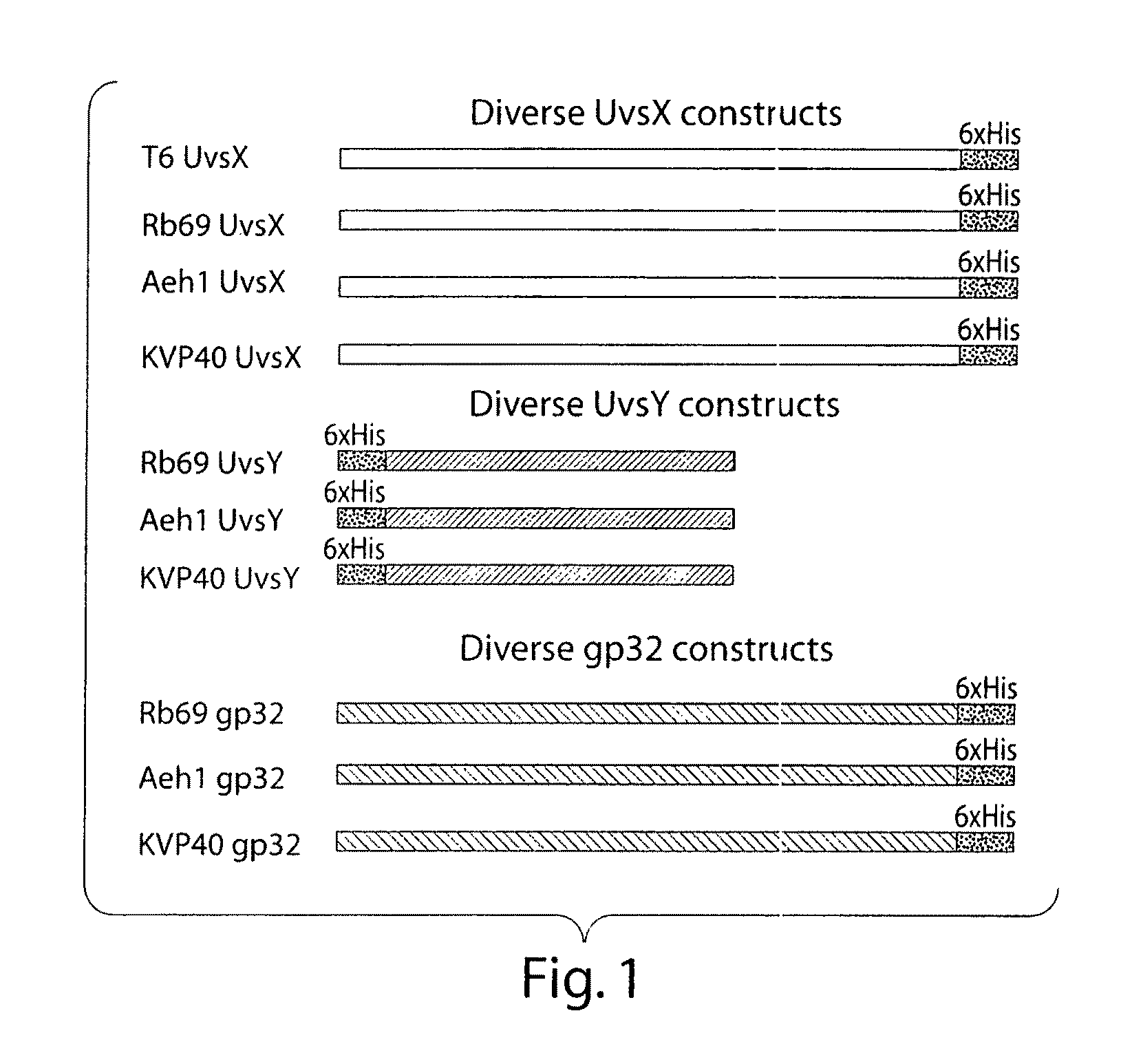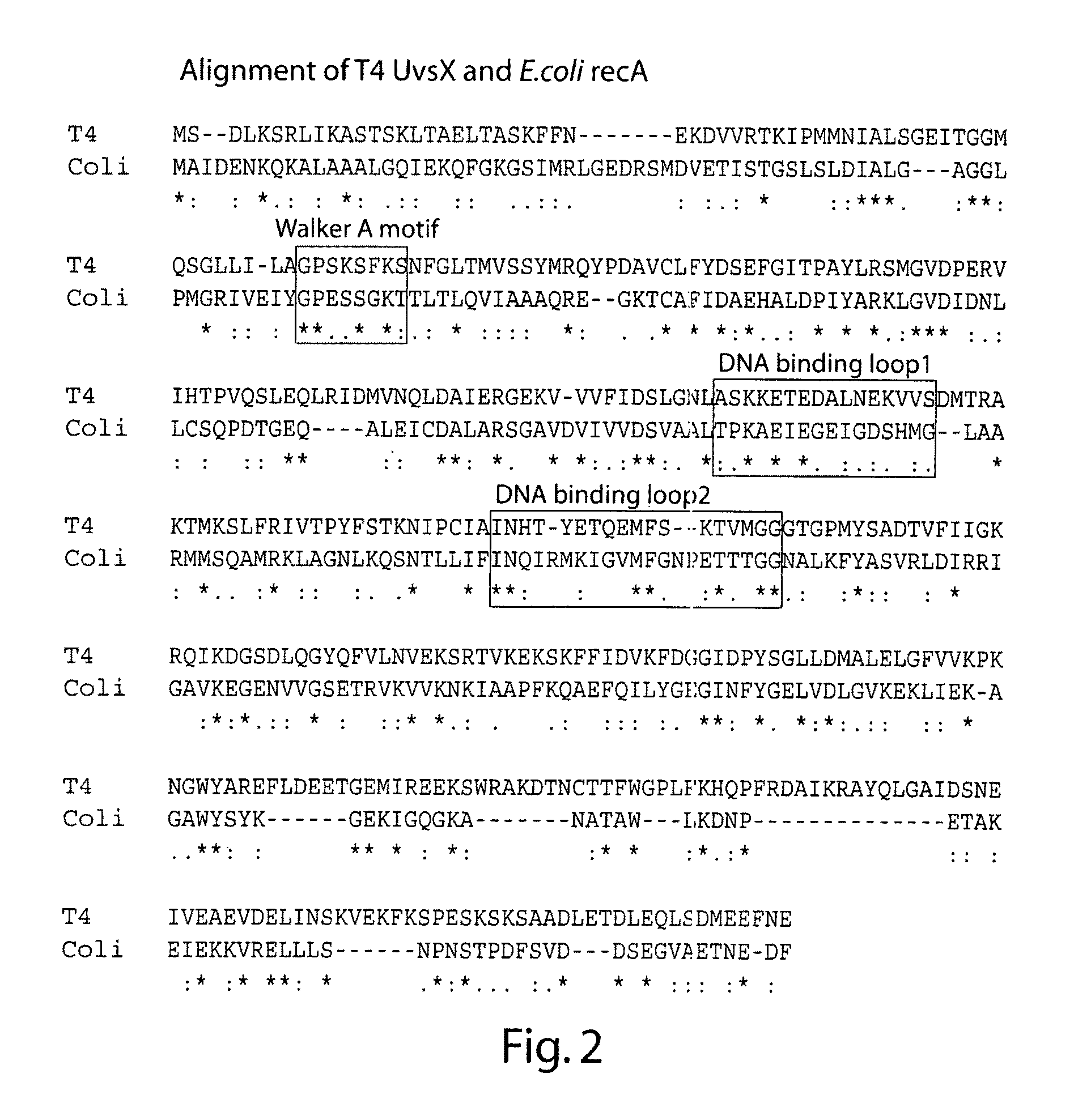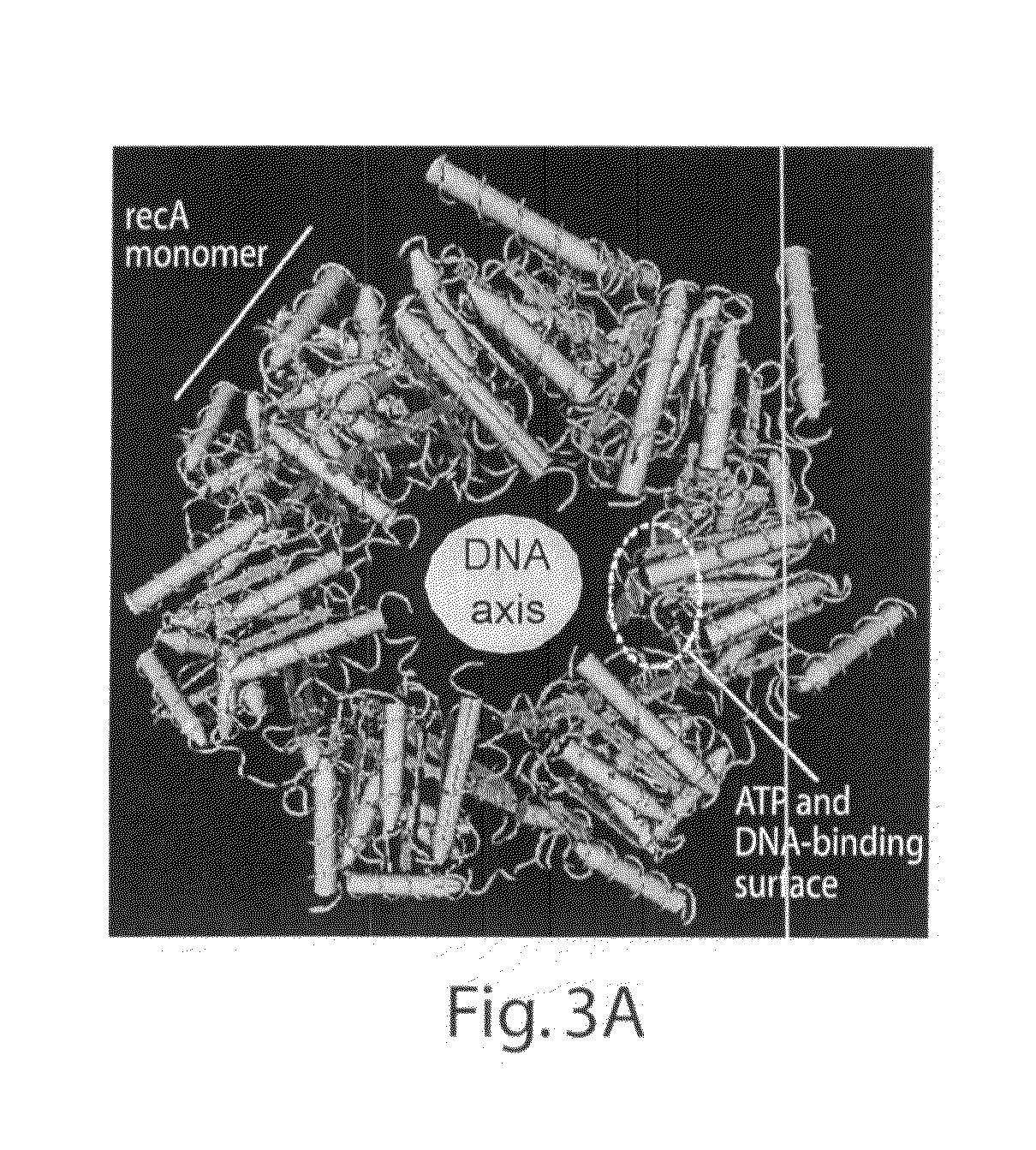Recombinase polymerase amplification
a technology of recombinase and polymerase, which is applied in the field of new hybrid and engineered recombinase enzymes, to achieve the effect of increasing the ability of e and reducing the level of non-specific primer nois
- Summary
- Abstract
- Description
- Claims
- Application Information
AI Technical Summary
Benefits of technology
Problems solved by technology
Method used
Image
Examples
example 1
Cloning and Protein Expression
[0180]All DNA manipulations were performed using standard techniques, in particular cloning using PCR, PCR-based mutagenesis procedures, and standard restriction digestion and ligation. Sequencing was performed by Lark technologies Ltd, Saffron Walden, UK. All proteins were expressed in E. coli and purified in 1M NaCl following lysis using lysozyme at 1 mg / ml and 2-3 freeze thaw cycles. Ni-NTA resin was purchased from Qiagen.
Amplification Reactions
[0181]The conditions for individual amplification reactions are described in the detailed descriptions provided below. In general reactions were monitored in real-time either by the inclusion of SYBR green dye, or more often by employment of a probe-based approach developed by us (see Piepenburg et al. 2006). In this case the probe is a third DNA primer which contains an internal tetrahydrofuran residue (abasic site mimic) flanked by a fluorophore and a quencher. On hybridization to amplified DNA this probe be...
example 2
Primary Sequence Alignment of Diverse Recombinase Proteins
Primary Sequence Alighment of T4 UvsX and E. coli RecA
[0187]The web-based tool MAFFT (accessed via the Expasy proteomics server) was used to align the primary polypeptide sequences of T4 UvsX and E. coli RecA, as shown in FIG. 2. This alignment was consistent with those generated and discussed elsewhere. Based on the known crystal structure of E. coli RecA the position of three regions of interest namely the Walker A motif involved in ATP binding and hydrolysis, the mobile DNA binding loop 1, and the mobile DNA binding loop 2 sequences are boxed. Under the alignment symbols indicate amino acid identity between all homologs (*), conserved substitutions (:), or semi-conserved substitutions (.).
Model of RecA Structure with Superimposition and Labelling of Equivalent T4 UvsX Residues
[0188]A model of the RecA nucleoprotein filament was generated using CN3D and a dataset downloaded from the NCBI database, PDB entry 1N03 (associated...
example 3
T6 UvsX Substituted for T4 UvsX in RPA Reactions Using Heterologous Components
[0193]RPA reactions were configured using primers Rs8179145-2 and Rs8179145-3 whose sequences are indicated. Target DNA was human genomic DNA, and reaction conditions were as follows: 100 mM potassium acetate, 50 mM Tris Acetate pH 8.3, 50 mM phosphocreatine, 3 mMP ATP, 200 μM dNTPs, 300 nM Rs8179145-2 primer, 300 nM Rs8179145-3 primer, 150 ng / μL T4 or T6 UvsX, 1000 ng / ng / μL T4 gp32, 40 ng / μL T4 UvsY, 42 copies of human genomic DNA, 5% Carbowax 20 M, and 32 ng / μL Bsu polymerase. After 90 minutes samples were purified via centrifugation through a Qiagen PCR product clean-up column. Purified samples were analyzed on an ethidium bromide stained agarose gel. The expected amplicon size from the human locus Rs817945 was 205 bp. Asterisks on the gel shown in FIG. 8 indicate the position of the expected band, 205 bp and the position of marker bands is indicated on the left. As shown in FIG. 8, T6 UvsX can effectiv...
PUM
| Property | Measurement | Unit |
|---|---|---|
| molecular weight | aaaaa | aaaaa |
| molecular weight | aaaaa | aaaaa |
| molecular weight | aaaaa | aaaaa |
Abstract
Description
Claims
Application Information
 Login to View More
Login to View More - R&D
- Intellectual Property
- Life Sciences
- Materials
- Tech Scout
- Unparalleled Data Quality
- Higher Quality Content
- 60% Fewer Hallucinations
Browse by: Latest US Patents, China's latest patents, Technical Efficacy Thesaurus, Application Domain, Technology Topic, Popular Technical Reports.
© 2025 PatSnap. All rights reserved.Legal|Privacy policy|Modern Slavery Act Transparency Statement|Sitemap|About US| Contact US: help@patsnap.com



